Product Consultation
Your email address will not be published. Required fields are marked *
Content
Hydraulic cylinders are vital mechanical actuators that use pressurized hydraulic fluid to generate linear force and motion. They play a central role in heavy-duty machinery and lifting equipment, converting hydraulic energy into mechanical output. These components are especially critical in applications where high force and precise movement are required, such as in cranes and industrial-grade equipment.
In crane systems and heavy-duty environments, the performance and reliability of hydraulic cylinders directly impact operational efficiency and safety. From lifting massive loads to stabilizing structural elements, the right hydraulic cylinder can determine the effectiveness of a system under extreme working conditions. Selecting a suitable cylinder is not just a matter of matching specifications—it involves evaluating factors such as pressure capacity, load demands, stroke length, mounting configuration, and environmental resilience.
This article provides an in-depth overview of hydraulic cylinders, focusing on their application in cranes and heavy-duty machinery. It also explores different cylinder types, their construction and functionality, key selection criteria, maintenance strategies, and emerging technologies shaping the future of hydraulic actuation.
Hydraulic cylinders are mechanical devices that produce linear motion and force through the use of incompressible hydraulic fluid. They are integral to hydraulic systems used in industrial, construction, and mobile equipment.
At its core, a hydraulic cylinder consists of a cylindrical barrel, a piston connected to a rod, and end caps. The basic function involves pressurizing fluid on one side of the piston to create movement in the rod. The fluid’s pressure forces the piston to extend or retract, producing linear motion.
Hydraulic cylinders operate based on Pascal’s Law, which states that pressure applied to a confined fluid is transmitted equally in all directions. When hydraulic fluid is pumped into one side of the cylinder, the pressure causes the piston to move. The force generated depends on the fluid pressure and the surface area of the piston.
Hydraulic cylinders come in several designs, each suited to specific operational needs and mechanical configurations. The choice of cylinder type affects the system’s overall performance, efficiency, and service life. Below are the most common types used in crane and heavy-duty machinery applications.
Description and Function:
Single acting cylinders are designed to apply force in only one direction—typically extension. Hydraulic fluid enters through a single port, pushing the piston outward. The return stroke is usually achieved through an external force, such as gravity or a spring.
Advantages:
Disadvantages:
Typical Applications:
Description and Function:
Double acting cylinders use hydraulic pressure to move the piston in both directions—extension and retraction. Two ports control fluid flow on either side of the piston.
Advantages:
Disadvantages:
Typical Applications:
Description and Function:
Telescopic cylinders feature multiple nested stages or sleeves that extend sequentially. This design allows for a longer stroke within a compact retracted length.
Advantages:
Disadvantages:
Typical Applications:
Description and Function:
Welded cylinders have their end caps welded directly to the cylinder barrel, forming a compact and durable design. These are typically used in demanding applications due to their strength and low profile.
Advantages:
Disadvantages:
Typical Applications:
Description and Function:
Tie rod cylinders use external threaded rods to hold the end caps in place, making them easier to service and disassemble.
Advantages:
Disadvantages:
Typical Applications:
Each type of hydraulic cylinder has unique structural features and performance characteristics. Choosing the correct one depends on application-specific factors such as force direction, space limitations, load requirements, and maintenance accessibility.
Hydraulic cylinders are essential to the functionality of cranes, providing the necessary force and control for lifting, lowering, extending, and rotating heavy loads. These cylinders are engineered to withstand high pressures, repetitive motion, and varying environmental conditions. Depending on the crane type and use case, hydraulic cylinders are tailored to meet specific mechanical and safety requirements.
Mobile cranes, often mounted on trucks or crawler bases, rely heavily on hydraulic cylinders for boom articulation, telescoping, outrigger deployment, and load lifting. These cylinders must operate under dynamic loads and varying angles while maintaining precise control.
Key Characteristics:
Application Areas:
Overhead cranes, typically used in industrial and manufacturing facilities, use hydraulic cylinders for hoisting and trolley motion, especially in designs where electric motors are complemented or replaced by hydraulic drives.
Key Characteristics:
Application Areas:
Construction cranes, including tower cranes and rough-terrain cranes, face high structural loads and often operate in harsh outdoor conditions. Hydraulic cylinders used in these cranes must provide high load-bearing capacity, durability, and corrosion resistance.
Key Characteristics:
Application Areas:
When designing or selecting hydraulic cylinders for crane applications, the following factors are typically prioritized:
Hydraulic cylinders in cranes are more than just actuators—they are safety-critical components that contribute to both the efficiency and reliability of lifting systems.
Heavy-duty hydraulic cylinders are engineered for demanding tasks that involve extreme force, high pressure, and continuous operation. These cylinders are critical components in industries such as construction, mining, and heavy manufacturing, where equipment performance and reliability are paramount. Their robust construction and specialized design features enable them to function effectively in harsh working conditions and high-load environments.
Earthmoving machinery such as excavators, bulldozers, and wheel loaders depend on hydraulic cylinders for digging, lifting, pushing, and steering operations. These applications require cylinders with high output force, abrasion resistance, and long service life.
Key Roles:
Design Requirements:
Mining operations involve large-scale, high-impact machinery such as rock crushers, drilling rigs, and haul trucks. The hydraulic cylinders used in these machines must operate under sustained high loads, resist corrosion, and withstand abrasive material exposure.
Key Roles:
Design Requirements:
Hydraulic presses used in manufacturing, metal forming, and recycling rely on hydraulic cylinders to apply immense pressure for shaping or compressing materials. These cylinders must deliver precise, consistent force across long duty cycles.
Key Roles:
Design Requirements:
Selecting or designing heavy-duty hydraulic cylinders requires attention to performance, durability, and safety factors:
Heavy-duty hydraulic cylinders are the driving force behind the power and precision of large-scale equipment. Their role is central to ensuring smooth operation, maximum output, and operator safety in some of the world’s most challenging industrial environments.
Selecting the right hydraulic cylinder is essential for achieving reliable performance, minimizing downtime, and ensuring system safety. Whether the cylinder is used in a crane, mining machine, or industrial press, several technical and environmental factors must be evaluated to match the cylinder to its application requirements.
Determining the Required Load Capacity:
Load capacity refers to the maximum force a hydraulic cylinder can safely exert. This depends on the piston area and system pressure. Accurately calculating the load requirements, including static and dynamic loads, ensures the cylinder can perform without strain or failure.
Safety Factors:
A proper safety margin—typically 1.5 to 2 times the expected working load—is built into the design to compensate for unexpected stress, shock loads, and fatigue over time. Underestimating load requirements can lead to premature wear or catastrophic failure.
Matching the Cylinder to System Pressure:
Hydraulic systems operate at various pressure ranges depending on the machinery and task. Common industrial systems range from 2,000 to 5,000 psi, while specialized applications can exceed that. Cylinders must be rated to withstand not only normal operating pressure but also pressure spikes.
Pressure Ratings and Safety Margins:
Manufacturers typically list the maximum rated pressure, including built-in safety margins. It’s important to ensure all components—cylinder, seals, fittings—can handle the designated pressure without risk of leakage or bursting.
Calculating the Necessary Stroke Length:
Stroke length is the distance the piston rod travels from fully retracted to fully extended. This must be carefully calculated based on the motion required by the application. Excessively long strokes in a compact design can cause rod flexing or instability.
Impact on Cylinder Design:
Longer strokes may require guides or rod supports to prevent buckling. Telescopic cylinders are often used when space constraints limit the ability to use a long single-stage cylinder.
Different Mounting Options:
Hydraulic cylinders are available in several mounting configurations, including:
Selecting the Appropriate Mounting Style:
The choice depends on the movement pattern, load direction, and alignment of the machine components. Proper mounting reduces wear and prevents side loading, which can damage the cylinder and its seals.
Temperature, Corrosion, and Other Environmental Considerations:
Hydraulic cylinders may operate in extreme conditions, such as freezing temperatures, high heat, saltwater environments, or abrasive dust. These factors influence cylinder material selection, seal composition, and surface treatments.
Material Selection for Harsh Environments:
Choosing the right hydraulic cylinder involves more than just matching dimensions. It requires a comprehensive analysis of mechanical load, system pressure, environmental exposure, motion profile, and operational safety. Investing in a well-specified cylinder helps improve system performance, extend equipment life, and reduce long-term operating costs.
Proper maintenance is critical for ensuring the reliable performance and extended service life of hydraulic cylinders, especially in demanding environments such as construction sites, manufacturing plants, and mining operations. A well-maintained hydraulic cylinder not only reduces the risk of failure but also improves efficiency and reduces operational costs.
Routine visual and functional inspections help detect early signs of wear or malfunction. Common checks include:
Regular inspection should follow a defined schedule based on operational hours or calendar intervals, depending on the equipment usage.
Although most hydraulic cylinders are self-lubricated by hydraulic fluid, some components—such as clevis pins or trunnion mounts—may require periodic manual lubrication.
Maintaining proper lubrication minimizes friction, enhances motion control, and prevents metal-to-metal contact that leads to premature wear.
Preventative maintenance goes beyond reactive repairs by addressing potential issues before they lead to failure. Best practices include:
A preventive approach not only keeps hydraulic systems running smoothly but also contributes to operator safety and cost-effective operations.
Consistent maintenance is the foundation of hydraulic system reliability. By establishing a clear maintenance plan that includes inspections, lubrication, and preventative measures, equipment owners can significantly extend the lifespan of hydraulic cylinders and reduce the likelihood of unplanned downtime or costly failures.
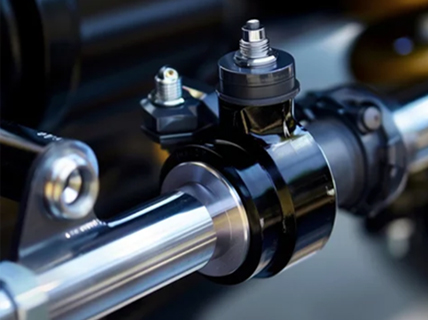
Even with proper design and routine maintenance, hydraulic cylinders can experience performance issues over time. Recognizing early warning signs and understanding their root causes helps prevent small problems from escalating into costly failures. Below are some of the most common hydraulic cylinder issues and how to address them effectively.
1. Hydraulic Fluid Leaks:
Leaks around the rod, ports, or seals are among the most frequent problems. These may be caused by worn seals, scratches on the rod, improper installation, or excessive internal pressure.
2. Slow or Jerky Operation:
Cylinders that move erratically or slower than usual may be dealing with internal leakage, trapped air, contaminated fluid, or damaged seals.
3. Cylinder Drift:
When a cylinder extends or retracts on its own without input, it’s often due to internal bypass (fluid leaking past the piston seal), faulty valves, or incorrect system pressure.
4. Overheating:
Excessive heat generation can reduce fluid viscosity and damage seals. Causes include high system pressure, overloading, or poor heat dissipation.
5. Rod Deformation or Scoring:
A bent or scored rod indicates side loading, misalignment, or contamination. This can lead to seal damage, leaks, and eventual cylinder failure.
6. External Contamination:
Mud, dust, or chemicals on the rod surface can be pulled into the cylinder during retraction, accelerating internal wear.
Step 1: Visual Inspection
Check the cylinder for visible damage, oil leaks, mounting misalignments, and contaminants. Pay special attention to the rod, seals, and fittings.
Step 2: Pressure Testing
Test the hydraulic pressure at the cylinder ports to determine whether the problem originates from the cylinder itself or the broader hydraulic system.
Step 3: Seal Evaluation
Inspect internal seals if the cylinder is disassembled. Look for flattening, cracking, swelling, or extrusion—signs that indicate fluid incompatibility or wear.
Step 4: Check Alignment and Mounting
Verify that the cylinder is properly aligned with the load direction and that mounting hardware is secure and undamaged.
Step 5: Analyze Fluid Condition
Check hydraulic fluid for discoloration, metal particles, or contamination. Dirty or degraded fluid should be replaced, and filters examined.
Repair When:
Replace When:
Knowing when to repair and when to replace a cylinder is a balance between cost, time, and risk. Quick intervention and proper diagnostics can reduce overall system downtime and prevent related component damage.
Over time, hydraulic cylinders may experience wear and damage that require more than routine maintenance. Repairing a hydraulic cylinder can restore its performance and extend its operational life—often at a lower cost than full replacement. Depending on the severity and nature of the issue, repairs may range from simple seal replacement to full rod re-machining or barrel reconditioning.
1. Disassembly:
Begin by safely disconnecting the cylinder from the hydraulic system and removing it from the equipment. Clean the exterior thoroughly to prevent contamination. Carefully disassemble the unit, noting the orientation of components for accurate reassembly.
2. Inspection of Components:
Each component—piston, rod, seals, cylinder barrel, and gland—should be inspected for wear, deformation, corrosion, or cracks. Common inspection tools include calipers, micrometers, and dial indicators.
3. Polishing and Cleaning:
Minor scratches on rods can often be polished out using fine-grit abrasives. Cleaning internal surfaces is essential to remove metal particles, sludge, or degraded fluid residues.
4. Replacement of Worn Parts:
Damaged or worn seals, bushings, and wear rings should be replaced using manufacturer-approved kits. If the rod is pitted or bent, it may require straightening or resurfacing.
5. Reassembly and Testing:
After replacing necessary parts, reassemble the cylinder following proper torque specifications. Conduct a pressure test or cycle test to verify sealing integrity and smooth operation before reinstalling the cylinder.
Seal failure is one of the most common reasons for hydraulic cylinder malfunction. Replacing seals is typically a cost-effective repair that can restore performance and prevent leaks.
Types of Seals to Replace:
Rod Seals: Prevent fluid from leaking out of the cylinder.
Piston Seals: Maintain pressure between cylinder chambers.
Wiper Seals: Remove contaminants from the rod as it retracts.
O-rings and Backup Rings: Provide additional sealing at critical joints.
Best Practices:
Always use seals that match original specifications.
Clean the seal grooves and inspect for nicks or burrs before installing new seals.
Lubricate seals with compatible hydraulic fluid before reassembly to avoid dry starts.
While basic repairs can be done in-house with the right tools and experience, some situations call for expert attention:
Severe Damage: Deep scoring on rods, cracked barrels, or broken end caps often require specialized machining or welding.
Precision Requirements: Cylinders in high-precision equipment or safety-critical applications should be repaired and tested by certified technicians.
Custom Cylinders: Repairs for custom or uncommon cylinders may involve sourcing specialized parts or reverse-engineering components.
Testing and Certification: Professional shops often provide post-repair testing (pressure testing, leakage checks) and offer warranties on their work.
Partnering with an experienced hydraulic repair service can reduce the risk of improper repairs and ensure that the cylinder meets OEM specifications and safety standards.
Timely and effective hydraulic cylinder repair can restore performance, reduce equipment downtime, and extend the service life of valuable machinery. Knowing which issues can be handled internally and which require professional expertise is key to managing long-term operational efficiency.
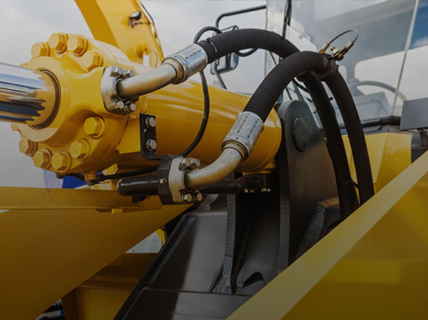
When reliability, safety, and performance are non-negotiable, choosing hydraulic cylinders from trusted manufacturers is essential. Reputable suppliers not only provide high-quality products but also offer engineering support, customization services, and global logistics capabilities. Below are some of the leading manufacturers in the hydraulic cylinder industry, recognized for their innovation, durability, and compliance with international standards.
Overview:
Parker is a global leader in motion and control technologies, offering a wide range of hydraulic cylinders for industrial and mobile applications. Their cylinders are known for precision engineering, durability, and support for high-pressure environments.
Product Offerings:
Overview:
Bosch Rexroth offers a comprehensive portfolio of hydraulic actuators, including both standard and customized cylinder solutions. Their products meet international quality standards and are used in sectors such as energy, infrastructure, and heavy machinery.
Product Offerings:
Overview:
Caterpillar manufactures heavy-duty hydraulic cylinders for its own line of construction and mining equipment, but also supplies to OEMs globally. These cylinders are engineered for durability in extreme conditions.
Product Offerings:
Overview:
Eaton offers high-performance hydraulic cylinders tailored to mobile and industrial systems. With a strong emphasis on reliability, their cylinders are used in agriculture, marine, and aerospace industries.
Product Offerings:
Overview:
Specializing in large-scale and custom hydraulic cylinders, Hydratech Industries serves sectors such as wind energy, offshore drilling, and heavy transport. They are known for their engineering expertise and project-specific design support.
Product Offerings:
Overview:
As one of the largest North American suppliers of hydraulic cylinders, Ligon operates through a network of companies, each serving niche markets. Their flexibility and responsiveness make them a preferred supplier for custom and OEM solutions.
Product Offerings:
These manufacturers represent a cross-section of the hydraulic cylinder market, from standardized mass-production cylinders to highly customized units for complex applications. Selecting a manufacturer involves considering not only product specifications but also technical support, global service networks, and the ability to meet compliance or certification requirements.
As industries push toward more efficient, intelligent, and environmentally conscious machinery, hydraulic cylinder technology continues to evolve. Advancements in materials, electronics integration, and design optimization are shaping the future of these critical components. Below are key trends that are expected to influence hydraulic cylinder development and application in the years ahead.
To meet higher performance demands and extend service life, manufacturers are adopting advanced materials and surface technologies:
These material innovations contribute to longer maintenance intervals and more reliable operation under harsh or continuous-use conditions.
With the growing use of Industry 4.0 technologies, hydraulic cylinders are increasingly integrated with sensors and control systems to enable real-time monitoring and automation.
These features are especially valuable in sectors such as mining, logistics, aerospace, and automated manufacturing, where uptime and precision are mission-critical.
Reducing energy consumption in hydraulic systems has become a priority due to rising operational costs and environmental concerns.
These advancements aim to make hydraulic cylinders more sustainable while maintaining or improving performance in demanding applications.
Modern equipment often requires tailored solutions rather than off-the-shelf components. Manufacturers are moving toward more modular, customizable cylinder designs:
Configurable Cylinder Platforms: Customers can specify bore size, stroke length, mounting style, and sensor packages from a standardized set of options.
Application-Specific Solutions: From compact cylinders for space-limited systems to oversized cylinders for offshore operations, customization enables better alignment with functional needs.
This shift toward modularity shortens lead times and makes high-performance solutions more accessible across industries.
Hydraulic cylinders are no longer just simple mechanical devices. As smart technologies and sustainable engineering practices become more integrated into industrial systems, hydraulic cylinders are evolving into intelligent, efficient, and application-aware components. These innovations promise to improve performance, reduce operating costs, and open new possibilities across construction, manufacturing, energy, and beyond.
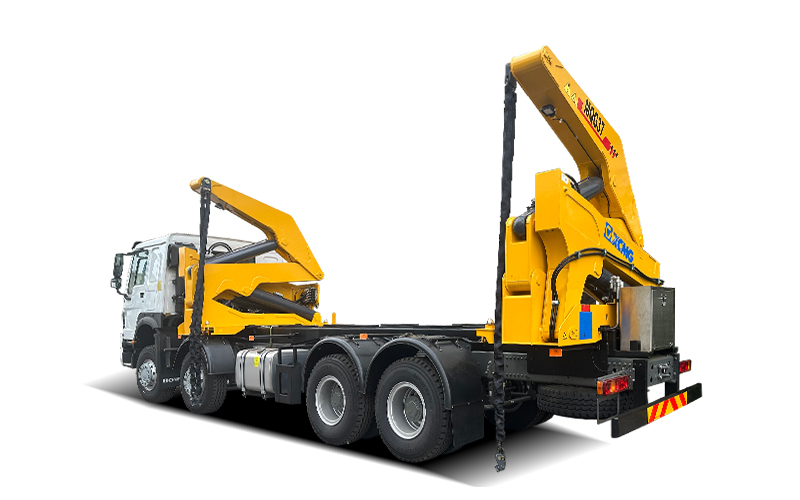
Hydraulic cylinders are fundamental components in cranes and heavy-duty machinery, providing the linear force and precise motion required for complex lifting, pushing, and positioning tasks. Understanding the various types—such as single acting, double acting, telescopic, welded, and tie rod cylinders—helps in selecting the right solution for specific applications.
Crane hydraulic cylinders must meet rigorous demands for load capacity, safety, and environmental resistance, while heavy-duty cylinders in earthmoving, mining, and industrial presses require durability, pressure endurance, and reliable sealing. Selecting a hydraulic cylinder involves carefully considering load requirements, operating pressures, stroke length, mounting style, and environmental factors to ensure optimal performance and longevity.
Regular maintenance, including inspections, lubrication, and preventative care, plays a critical role in preventing common problems like leaks, slow operation, and rod damage. Timely troubleshooting and repairs, whether done in-house or by professional services, help avoid costly downtime and extend cylinder life.
Partnering with reputable manufacturers ensures access to quality components designed for demanding conditions and backed by technical support. Looking ahead, advancements in materials, smart sensor integration, energy efficiency, and modular design are driving the evolution of hydraulic cylinders into smarter, more efficient, and customizable solutions.
By selecting the appropriate hydraulic cylinder and maintaining it effectively, operators can enhance equipment performance, improve safety, and reduce operational costs—key factors in the success of any heavy-duty or crane application.
Your email address will not be published. Required fields are marked *
Marvelous Design Meets Rigorous Manufacturing
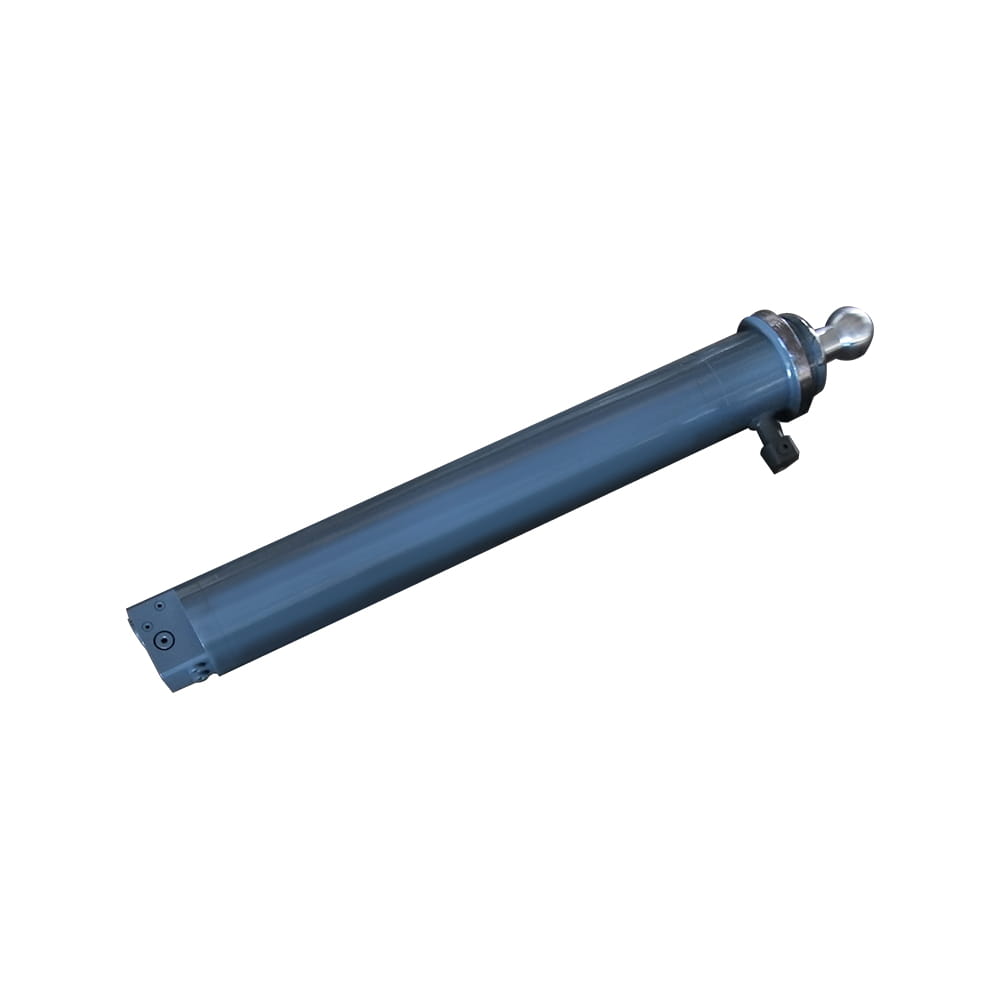 Scissor Lift Aerial Platform Hydraulic Outrigger Cylinder
Scissor Lift Aerial Platform Hydraulic Outrigger Cylinder
Function: Firmly Supports the Vehicle: Ensures stability during operation. The ball-head foot automatically levels on slopes, while the integrated balance valve...
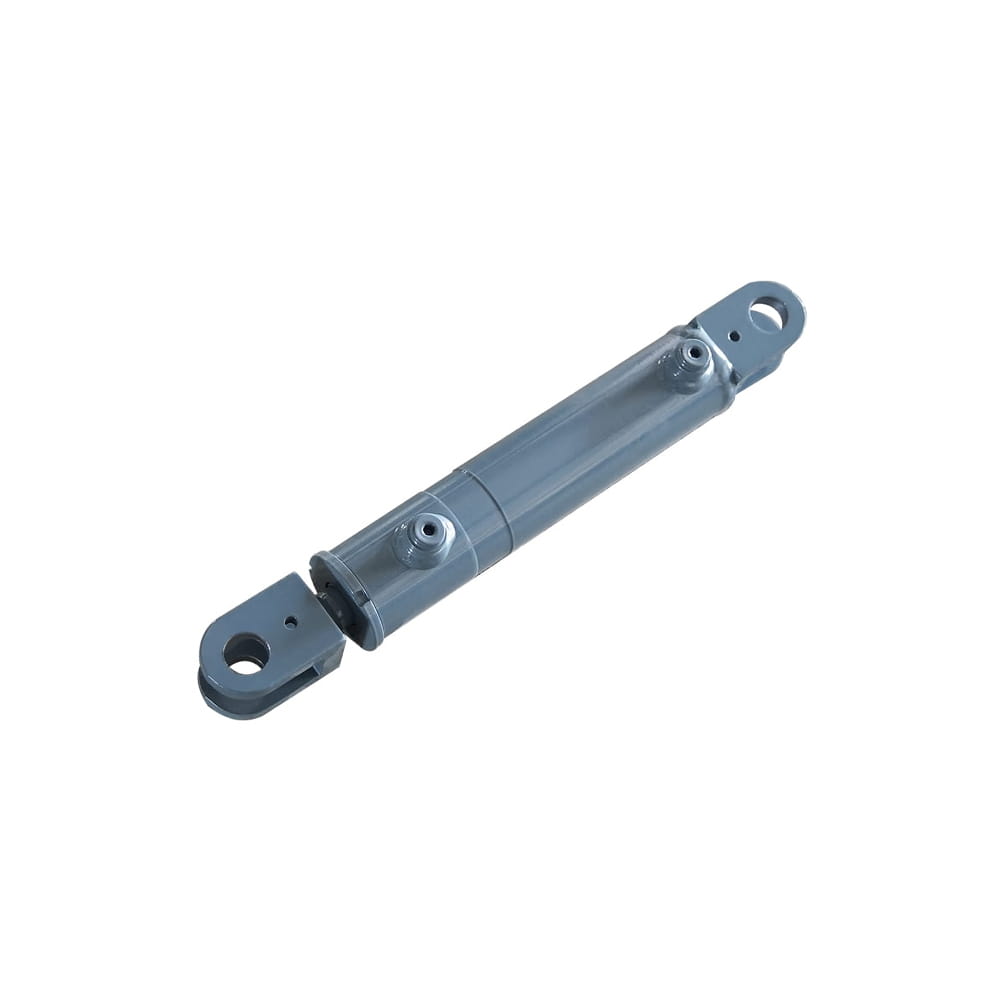 Scissor Lift Aerial Platform Hydraulic Steering Cylinder
Scissor Lift Aerial Platform Hydraulic Steering Cylinder
Function: Connecting Chassis and Wheel Hub: Through hydraulic pressure, drives the piston rod to move, enabling precise wheel hub rotation. This ensures platfor...
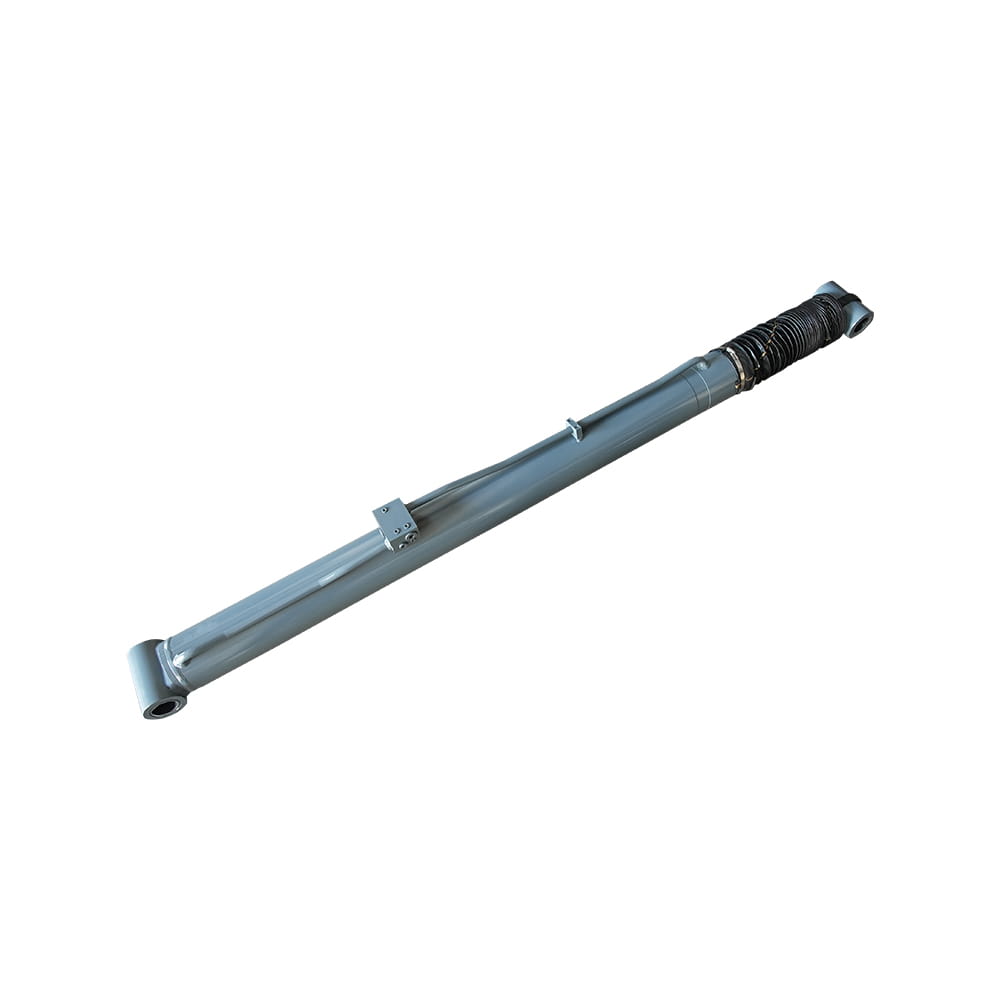 Boom Lift Aerial Platform Hydraulic Luffing Cylinder
Boom Lift Aerial Platform Hydraulic Luffing Cylinder
Function: Adjust the angle of the telescopic arm to flexibly position the work platform at various heights and positions, meeting diverse aerial work requiremen...
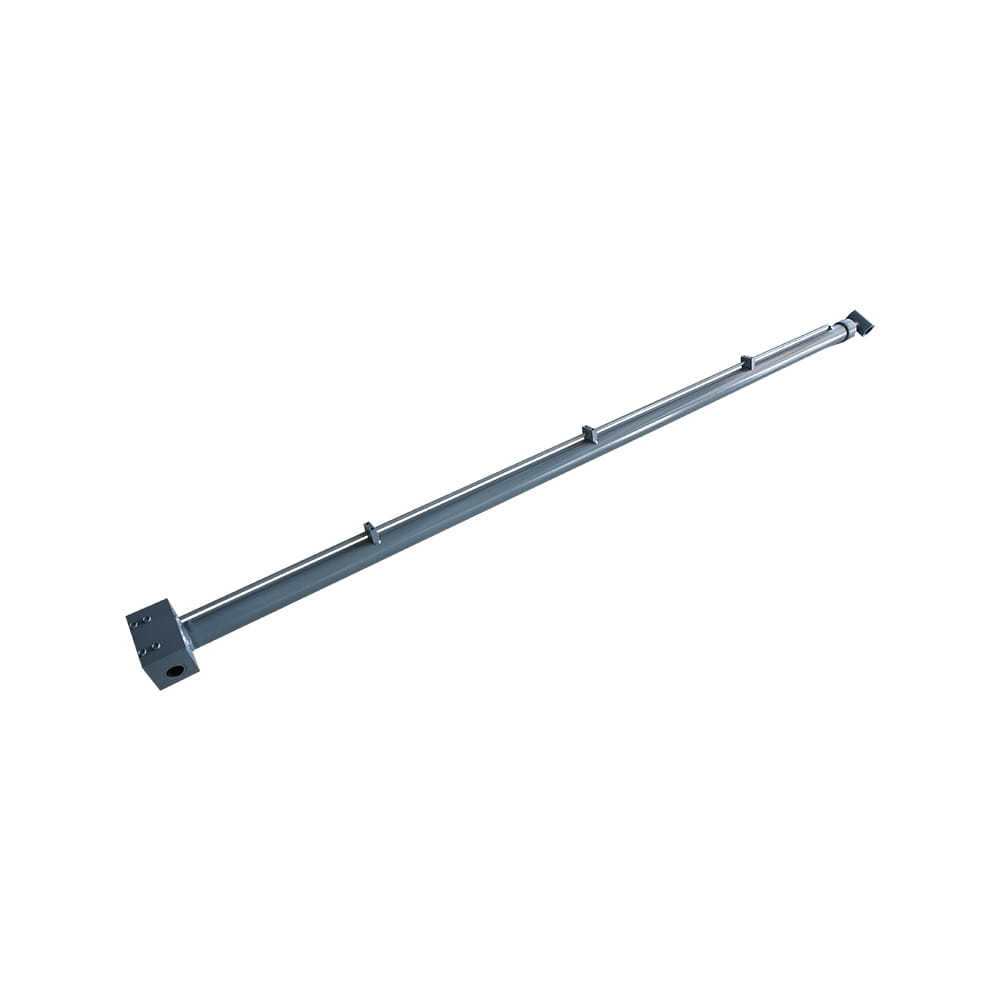 Boom Lift Aerial Platform Hydraulic Telescopic Cylinder
Boom Lift Aerial Platform Hydraulic Telescopic Cylinder
Function: Adjust the length of the arm to allow the aerial work platform to lift and move flexibly, ensuring range and height requirements.
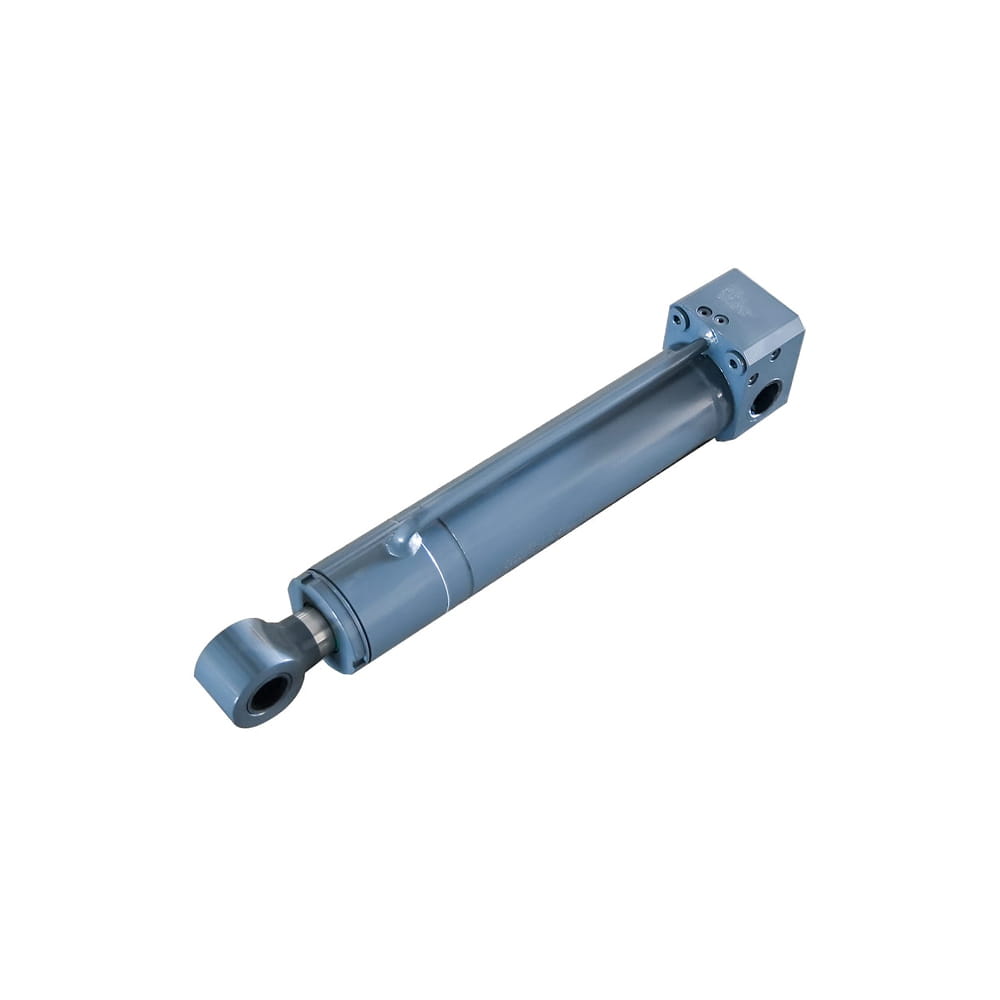 Boom Lift Aerial Platform Hydraulic Frame Leveling Cylinder
Boom Lift Aerial Platform Hydraulic Frame Leveling Cylinder
Function: Automatically adjust the chassis at the bottom of the platform to a level state, ensuring stable and wobble-free support in different terrains and wor...
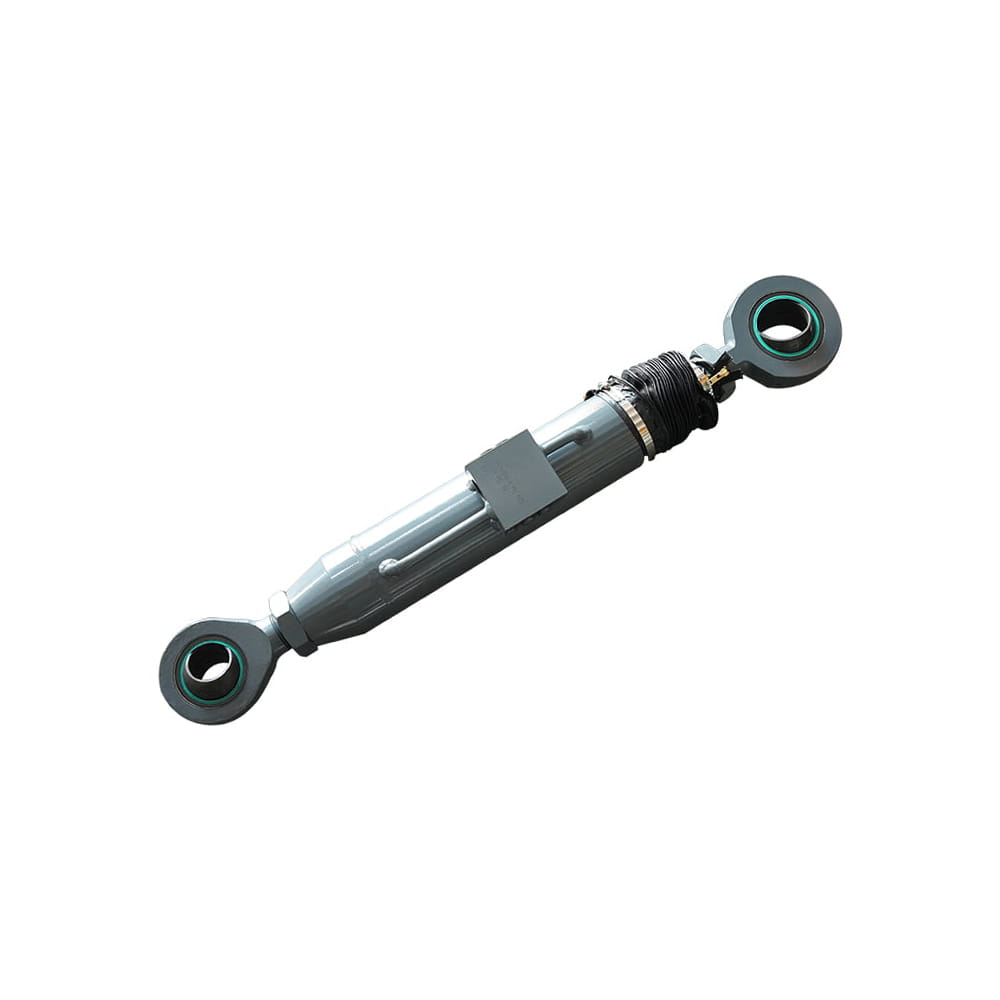 Boom Lift Aerial Platform Hydraulic Bridge Extension Cylinder
Boom Lift Aerial Platform Hydraulic Bridge Extension Cylinder
Function: An important design that enhances adaptability and working range. This function allows the platform to widen its chassis under specific conditions to ...
Copyright © by Zhejiang Huanfeng Machinery Co., Ltd. Rights Reserved.
